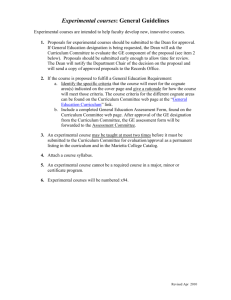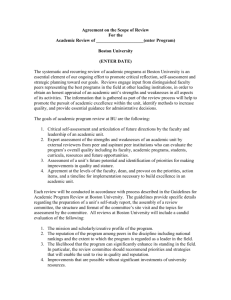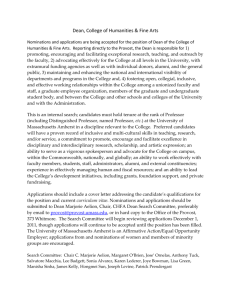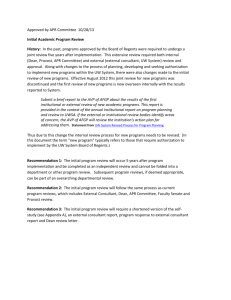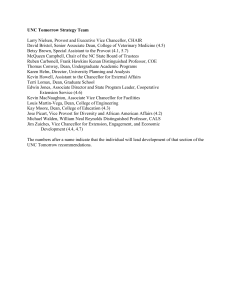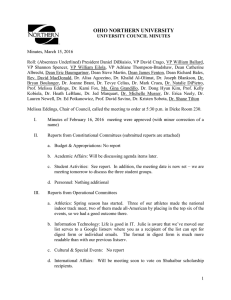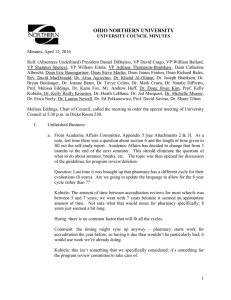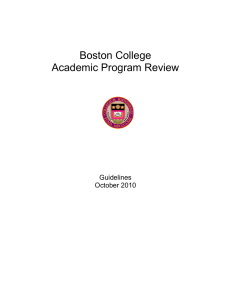Agenda
advertisement
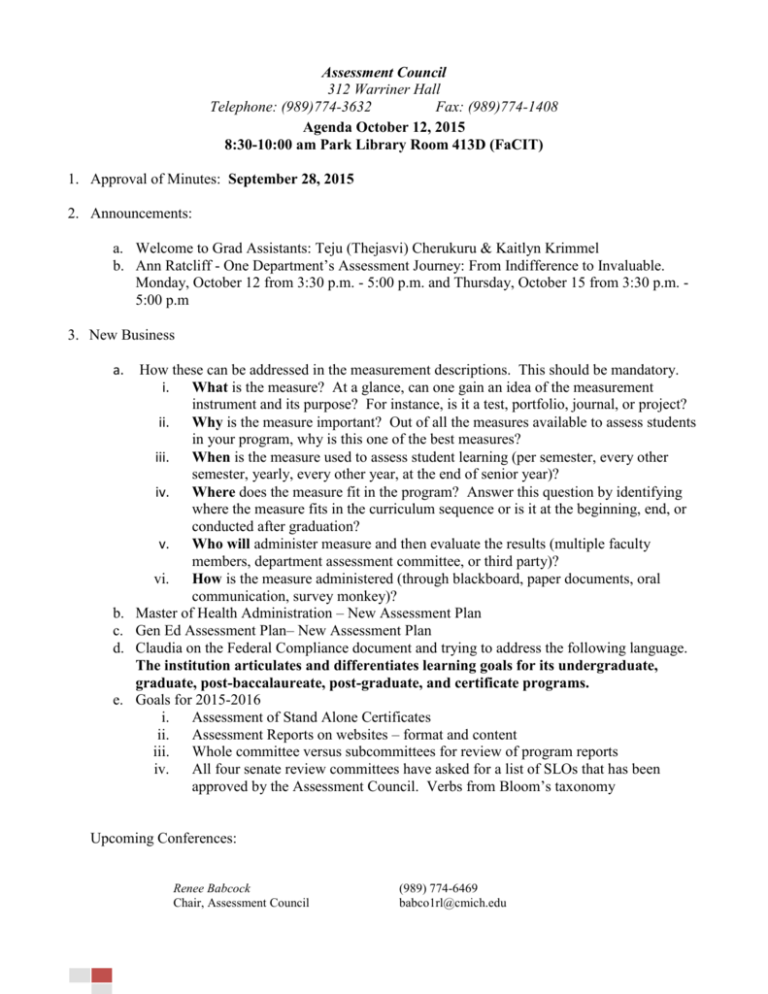
Assessment Council 312 Warriner Hall Telephone: (989)774-3632 Fax: (989)774-1408 Agenda October 12, 2015 8:30-10:00 am Park Library Room 413D (FaCIT) 1. Approval of Minutes: September 28, 2015 2. Announcements: a. Welcome to Grad Assistants: Teju (Thejasvi) Cherukuru & Kaitlyn Krimmel b. Ann Ratcliff - One Department’s Assessment Journey: From Indifference to Invaluable. Monday, October 12 from 3:30 p.m. - 5:00 p.m. and Thursday, October 15 from 3:30 p.m. 5:00 p.m 3. New Business a. b. c. d. e. How these can be addressed in the measurement descriptions. This should be mandatory. i. What is the measure? At a glance, can one gain an idea of the measurement instrument and its purpose? For instance, is it a test, portfolio, journal, or project? ii. Why is the measure important? Out of all the measures available to assess students in your program, why is this one of the best measures? iii. When is the measure used to assess student learning (per semester, every other semester, yearly, every other year, at the end of senior year)? iv. Where does the measure fit in the program? Answer this question by identifying where the measure fits in the curriculum sequence or is it at the beginning, end, or conducted after graduation? v. Who will administer measure and then evaluate the results (multiple faculty members, department assessment committee, or third party)? vi. How is the measure administered (through blackboard, paper documents, oral communication, survey monkey)? Master of Health Administration – New Assessment Plan Gen Ed Assessment Plan– New Assessment Plan Claudia on the Federal Compliance document and trying to address the following language. The institution articulates and differentiates learning goals for its undergraduate, graduate, post-baccalaureate, post-graduate, and certificate programs. Goals for 2015-2016 i. Assessment of Stand Alone Certificates ii. Assessment Reports on websites – format and content iii. Whole committee versus subcommittees for review of program reports iv. All four senate review committees have asked for a list of SLOs that has been approved by the Assessment Council. Verbs from Bloom’s taxonomy Upcoming Conferences: Renee Babcock Chair, Assessment Council (989) 774-6469 babco1rl@cmich.edu October 25 – 27, 2015, IUPUI Planning and Institutional Improvement, The 2015 Assessment Institute, http://www.assessmentinstitute.iupui.edu/index.shtml (Registration Ends Monday, September 2015) Annual Texas A & M Assessment Conference, TBD: http://assessmentconference.tamu.edu/conference/ October 21, San Angelo, TX- West Texas Assessment Conference, http://www.depts.ttu.edu/opa/wtac/ April 15–19: HLC 2016 Annual Conference: Beyond the Horizon (Chicago, Illinois) Additional Resource for Assessment Conferences: http://www.assessmentconferences.com/ Assessment Council Meeting Dates 2015/2016 October 26 November 9 and 23 December 14 January 11 and 25 February 8 and 22 March 14 and 28 April 11 and 25 Additional Material for Above Discussion Content in WEAVE: o Student Learning Outcomes, o Measures, Targets, and Findings o Analysis Questions and Answers How and with whom were the results shared? Reflecting on this year’s assessment(s), what conclusions and/or discoveries have you made regarding student learning when considering the data overall; how does that analysis change when compared with previous assessment evidence? Based on the evidence of your program’s assessment findings, what subsequent actions will your program take? Reflecting on the previous year’s action plans and since the last submitted report, what actions have been taken? Assessment Cycle o Year 1 – Program Review (what part comes to Assessment Council?) o Year 2 – Enter data in WEAVE (coordinators check?) o Year 3 – Report to Assessment Council (as currently done) o Year 4 – Enter data in WEAVE (coordinators check?) o Year 5 – Program Review (what part comes to Assessment Council?) Elements in Program Review o Self-Study - Program faculty perform a self-study in response to criteria. Dean vets the self-study before it is sent for external review. o Library Resources - Program faculty in consultation with library staff evaluate adequacy of library resources. o Information Technology Resources - Program faculty in consultation with IT staff evaluate adequacy of information technology resources. Renee Babcock Chair, Assessment Council (989) 774-6469 babco1rl@cmich.edu o Program-level SWOT Analysis - Program faculty summarize program strengths, weaknesses, opportunities, and threats. o External Review - Dean selects external reviewer from list of academic leaders in the same discipline at similar or aspirational institutions provided by department. o Program Response to External Review - Program faculty respond to external review. Revise SWOT if necessary. o Action Plan - Program faculty develop an action plan to improve the program. o Ratings of Quality, Size, and Resource Funding - Program faculty rate program quality, size, and funding. o Dean-level SWOT Analysis, Next Steps, and Ratings - Responsible dean reviews all above materials and responds with a SWOT analysis, ratings of quality, size, and funding, and adds discussion of next steps. Graduate dean does the same for graduate program o Provost Review and Recommendation - Dean sends materials to provost and vice provost for academic effectiveness. Provost’s office schedules a meeting with dean (including graduate dean when applicable) and department or council chair. Following discussion of the program review documents, SWOT analyses and potential for program improvement, provost makes recommendations for follow-up actions. o Follow-up Actions - Individuals identified in memo from provost provide updates on progress. Renee Babcock Chair, Assessment Council (989) 774-6469 babco1rl@cmich.edu

